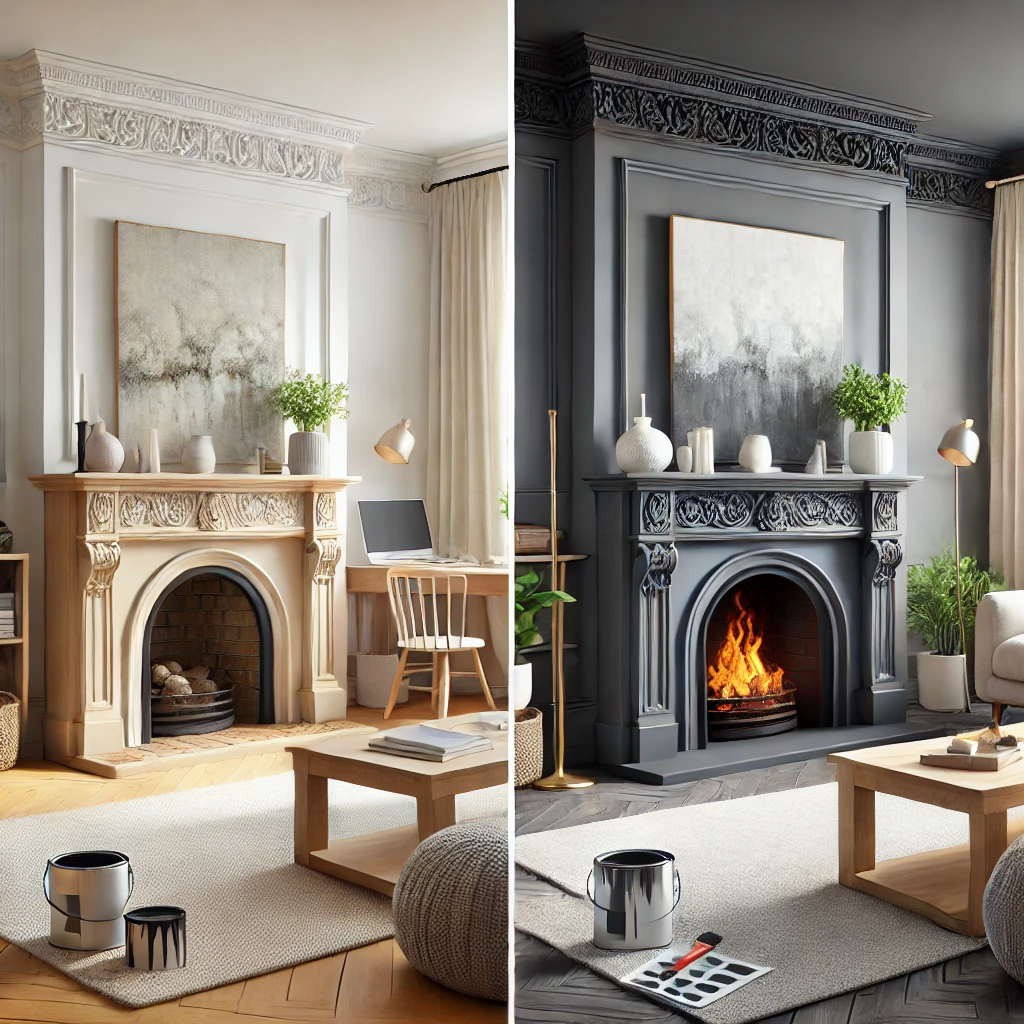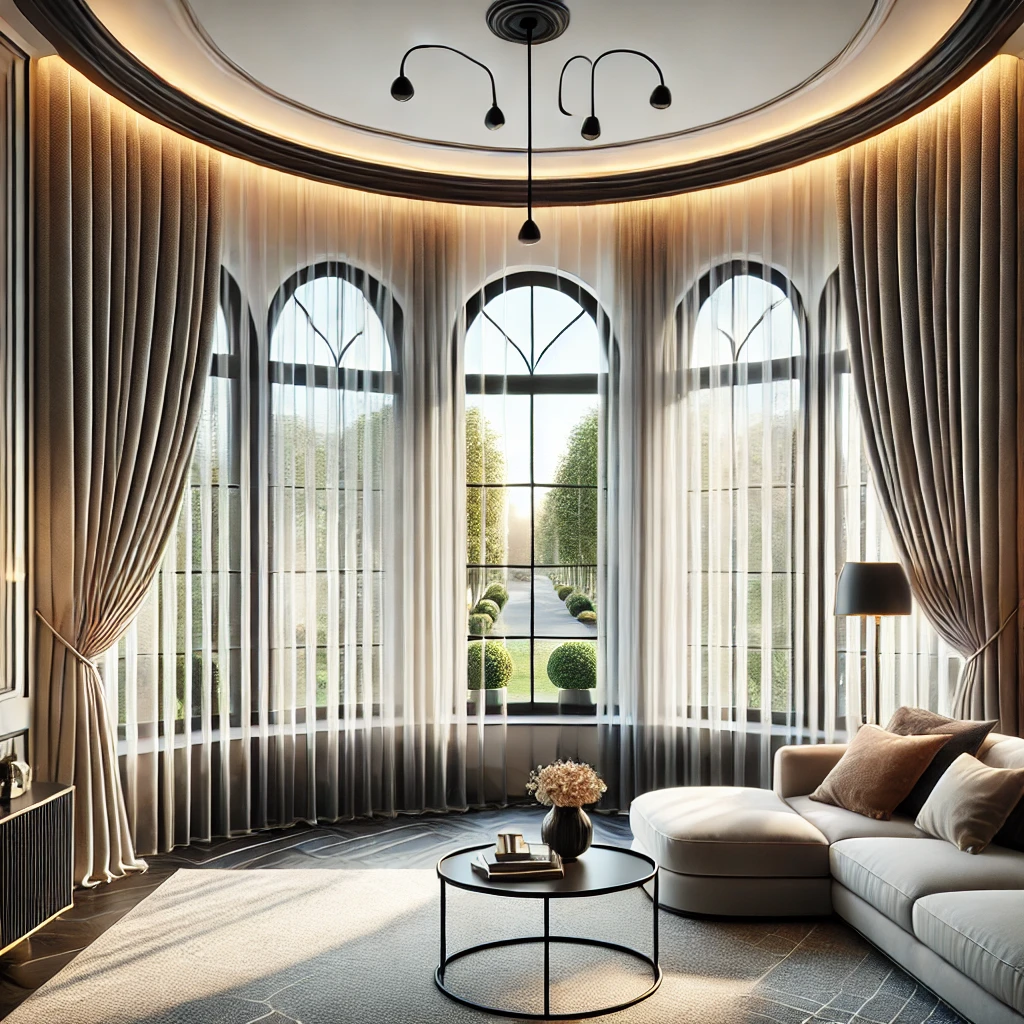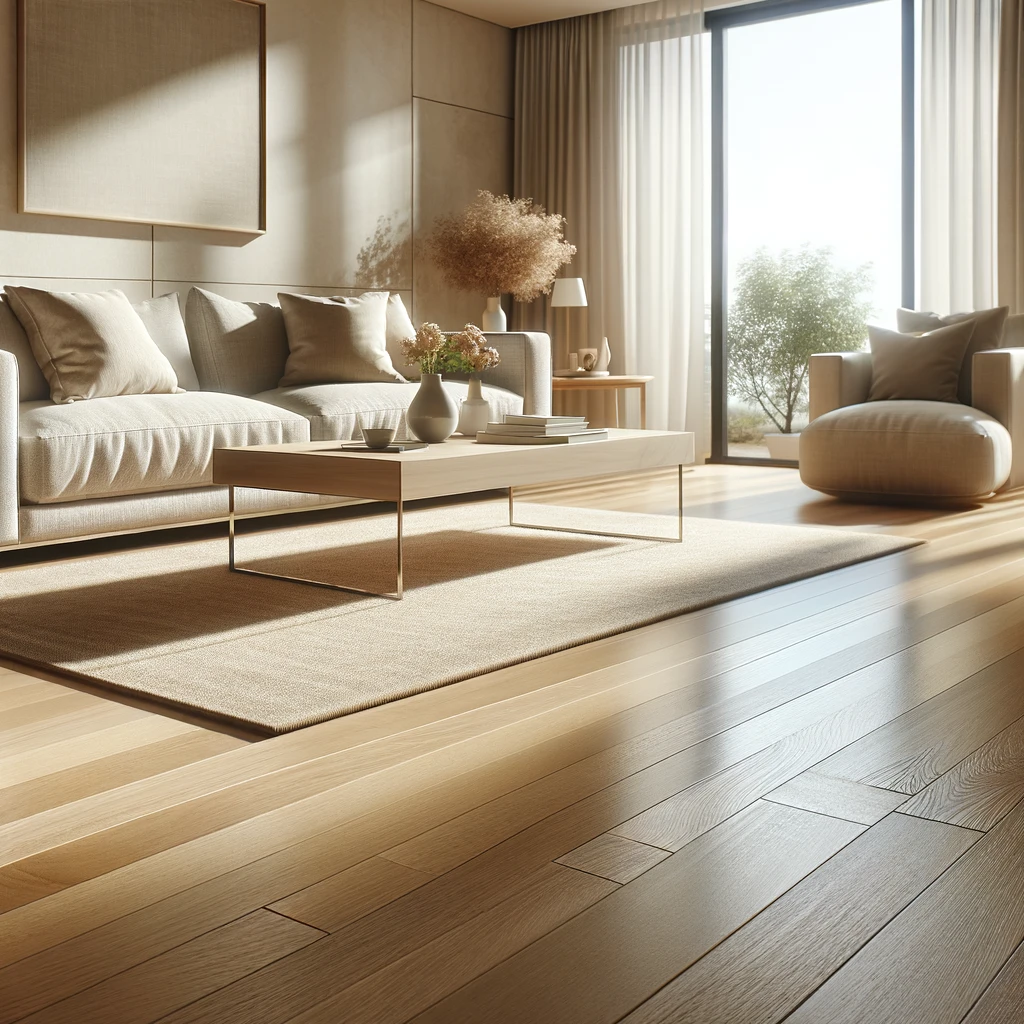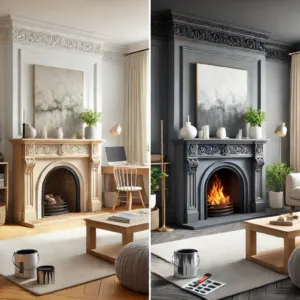How to Paint Fireplace: A Simple Step-by-Step Guide
Thinking about painting your fireplace? It’s one of the easiest ways to completely transform a room. Trust me—it’s easier than it sounds. Let me walk you through the process of how to take a dated fireplace and make it the centerpiece of your space.
Once upon a time, my fireplace was just… there. A neutral fixture blending into a neutral wall. It didn’t say anything about me or my home.
But you know what? A fireplace should make a statement. It should add character, warmth, and a touch of style to your room.
And so, armed with a can of paint, a brush, and a little inspiration, I decided to breathe new life into it.

A simple, neutral fireplace before painting, ready for a transformation. The perfect blank canvas for adding personality to your space
How to Paint Fireplace: A Simple Step-by-Step Guide
Why Paint Your Fireplace?
Painting a fireplace isn’t just about aesthetics—it’s about making your home feel more like you. Whether you’re tackling a brick fireplace, a wooden mantel, or even the interior firebox, paint can make all the difference.
It’s affordable, creative, and, best of all, completely customizable.

What You’ll Need
Before we jump into the steps, here’s a quick list of what you’ll need:
- Fireplace Paint: High-heat, durable paint is essential for areas near the firebox. For mantels or surrounds, standard interior paint works well.
- Paintbrushes and Rollers: Use small brushes for intricate details and rollers for larger surfaces.
- Painter’s Tape: Protect the walls and floor around your fireplace.
- Drop Cloths: Keep your workspace tidy.
- Sandpaper: Especially important if you’re repainting or working with a wooden fireplace.
- Cleaner: Degrease and dust the surface for better paint adhesion.
The Step-by-Step
- Prep the Fireplace
- Start by cleaning the entire surface. For brickwork, use a stiff brush to remove debris. For wood, wipe down with a degreaser.

- Sand the Surface
- For wooden fireplaces, lightly sand the area to smooth out imperfections and help the paint adhere better.
- Apply Painter’s Tape
- Protect the surrounding walls, floor, and any areas you don’t want painted.
- Choose the Right Paint
- For the interior firebox or areas near heat, choose high-heat-resistant paint. For the exterior, an interior latex paint or chalk paint works beautifully.

source: https://thistlewoodfarms.com/how-to-paint-a-fireplace/
- Prime (Optional)
- If your fireplace has a dark or uneven surface, consider applying a primer first. This helps the paint color stand out and last longer.
- Paint
- Use a small roller for large areas and a brush for details. Apply thin coats, allowing each to dry before adding another.
- Seal (Optional)
- For extra durability, especially on high-touch areas like the mantel, consider applying a sealant.
Tips for Painting Different Fireplace Types
- Brick Fireplaces: Use a masonry paint for durability. If you want a rustic look, consider whitewashing instead of fully painting.
- Wooden Fireplaces: Sanding is key. Use interior paint in satin or semi-gloss for a polished finish.
- Interior Firebox: High-heat paint is a must. Stick to neutral tones like black or gray for a classic look.

A Whole New Look
After just a weekend of work, my once-neutral fireplace became the focal point of the room. Now, when I sit down to relax or entertain, it feels like the fireplace is a part of the story, not just part of the background.

A stunning, freshly painted fireplace that has become the centerpiece of the room. An affordable and stylish makeover.
So, whether you’re repainting a wooden fireplace or giving your brickwork a bold new hue, don’t overthink it—just go for it.

Your home deserves a little extra. And painting your fireplace? It’s the perfect place to start.

source: https://thistlewoodfarms.com/how-to-paint-a-fireplace/









Post Comment